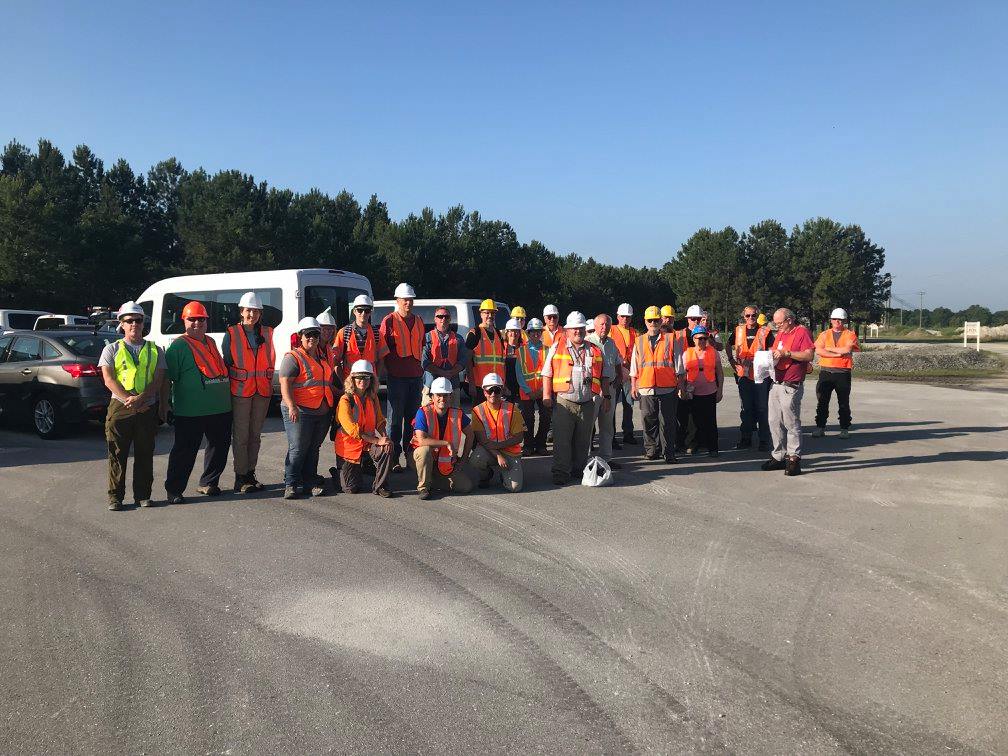In May of 2018, FOSSIL collaborated with the Special Friends of the Aurora Fossil Museum (SFAFM) to host a community science dig at the Belgrade Mine in North Carolina. FOSSIL was joined by 10 individuals from around the US, who were selected to participate based on their completion of the FOSSIL Community Survey.
At the mine, participants searched through sediment piles from the Belgrade formation, which had been graciously set aside by the mine manager and staff. The goal was to find rare extinct land mammals from the Belgrade layer, a Miocene deposit from 5- 20 million years ago. After three hours of diligent sifting, participants collected bags of specimens and buckets of matrix for further analysis at the Florida Museum. The research on this material is ongoing, and we’re excited to keep the community updated on what we find. So far, the matrix has revealed an assemblage of marine fishes, including pufferfish, gar, barracuda, and drum fish. A surprising find has been a colubrid snake vertebra, the first of its kind documented at Belgrade! You can see a 3D scan of that specimen, created by Jeanette Pirlo, here: https://www.myfossil.org/ac-media/39806/.
We’d like to thank Martin Marietta, Mine Manager Doug Fetsko, and the staff of the Belgrade Mine for making this research opportunity possible, and for showing us such wonderful hospitality while at the mine. We also appreciate the efforts of SFAFM president Lee Cone for helping coordinate this citizen science project. To learn about the trip from a participant’s perspective, read Hunter Thurmond’s article about his experience here: https://www.myfossil.org/citizen-science-at-belgrade.
Prior to dig, participants learned more about the research through an interactive webinar hosted by The FOSSIL Project. You can view a recording of the webinar here:
July 2019 Update
